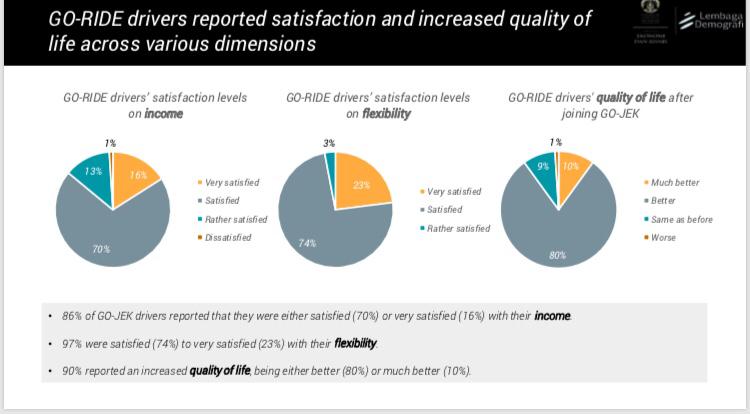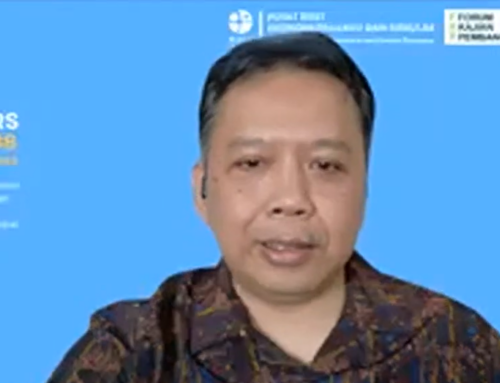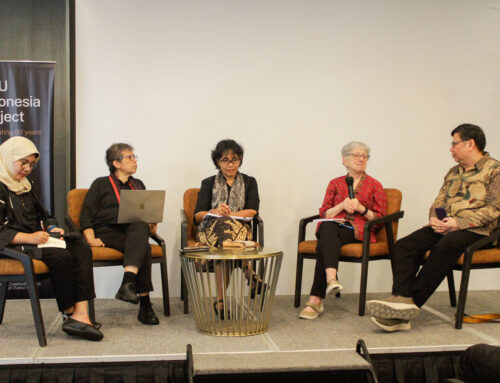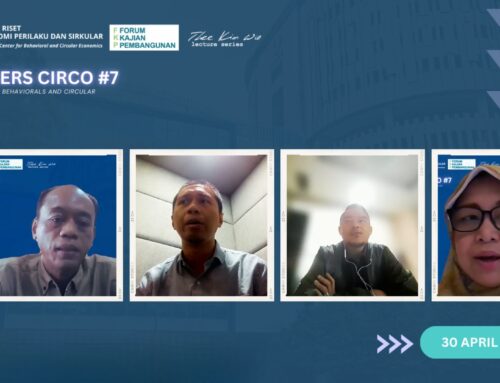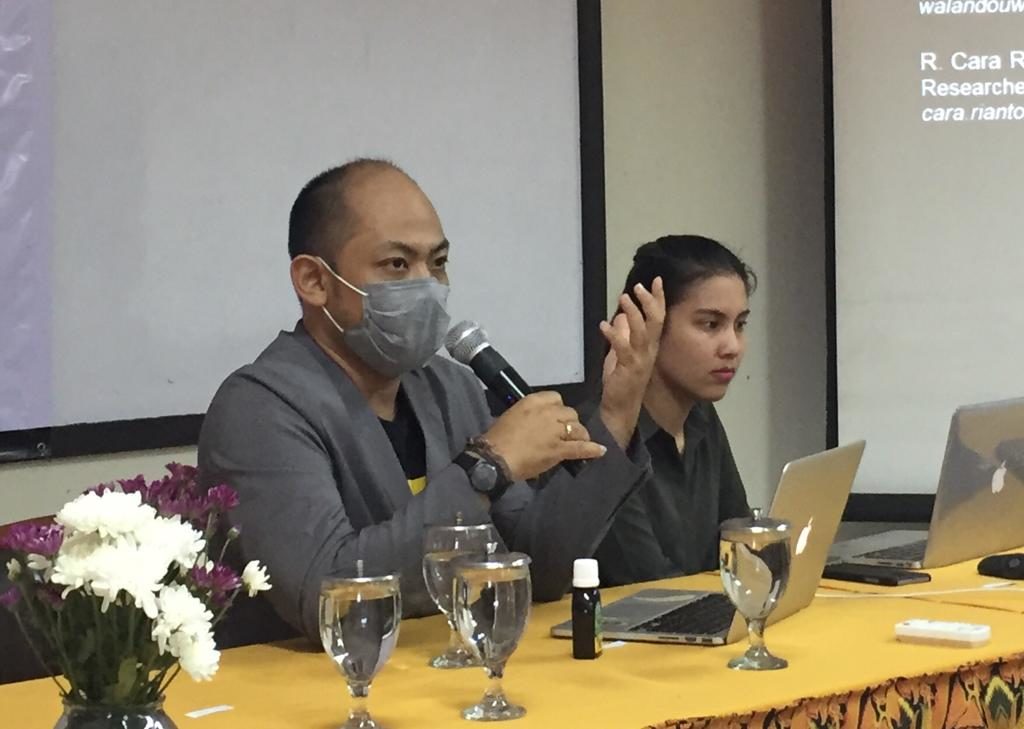 Technological innovations have digitalized traditional ojek (i.e. motorcycle taxi) in Indonesia, as shown by the rapid development of GO-JEK. Despite providing thousands of job opportunities, GO-JEK often face criticisms, which often come from the drivers themselves. Paksi C.K. Walandouw and Cara Riantoputra (both of Lembaga Demografi FEB UI) presented their research regarding this topic in the last FKP seminar of the month on Friday, 30 March 2019 in Lembaga Demografi.
Technological innovations have digitalized traditional ojek (i.e. motorcycle taxi) in Indonesia, as shown by the rapid development of GO-JEK. Despite providing thousands of job opportunities, GO-JEK often face criticisms, which often come from the drivers themselves. Paksi C.K. Walandouw and Cara Riantoputra (both of Lembaga Demografi FEB UI) presented their research regarding this topic in the last FKP seminar of the month on Friday, 30 March 2019 in Lembaga Demografi.
This study aims to understand the change of drivers’ wellbeing since joining GO-JEK (specifically GO-RIDE) and how their motivations affect their wellbeing. However, Cara Riantoputra also noted the descriptive nature of this study, meaning that further studies are needed to get a more in-depth understanding of the issue.
In general, since joining the company GO-RIDE drivers experienced a substantial increase in their income and expenditure by around 44% and 31%, respectively. Most drivers also claimed that they are satisfied with their income, work flexibility, and quality of life after joining GO-JEK. These generally positive results raise a question: If drivers are all generally satisfied, why do demonstrations by drivers still occur?
One possible explanation is the dissatisfied drivers, which make up to around 1% of the total GO-JEK drivers or equivalent to around 9 thousand drivers. Although relatively small in proportion, the number of these drivers seems to correlate with the turnout rate at demonstrations. In addition, this study also found that drivers rate the quality of business partnership least positive out of the other dimensions (e.g. income, flexibility, quality of life). Therefore, it is also possible that the reason behind these protests is beyond income, work flexibility, and quality of life, but rather how the company treats the drivers.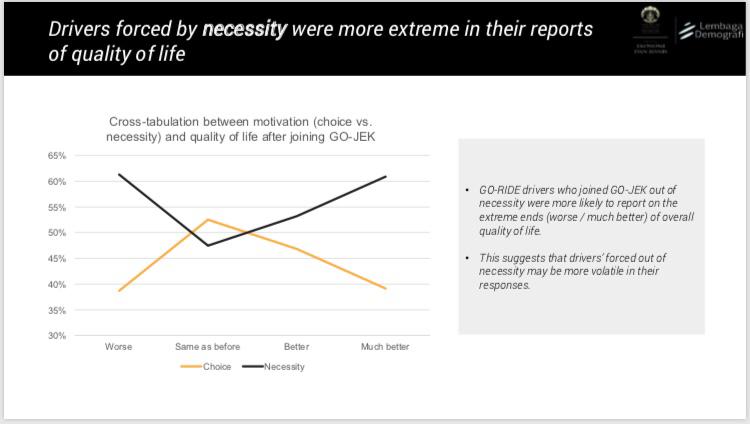
Next, to understand drivers’ motivation in joining GO-JEK, the study divides drivers’ motives into two main categories: choice or necessity. According to Cara, this classification is important because people who have limited options (i.e. forced by necessity) are more likely to have a different benchmark in reporting their satisfaction. After categorizing the drivers based on their motivations, this study found that drivers forced by necessity are more likely to report extreme answers (i.e. very high or very low) regarding their quality of life. Moreover, this same group of drivers is also more likely to report advantageous business partnership and on average have higher income than those who work by choice.
For the complete presentation and Q&A session, please refer to the video and materials provided.
